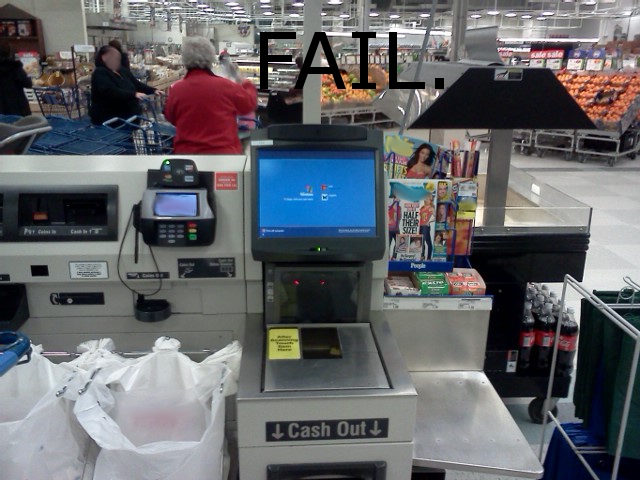Self-service checkouts - love them or hate them, its all about the customer
2013-01-31

Self-service checkouts in supermarkets and other retails shop fronts are fascinating on so many levels - from their design to the ethical dilemma of replacing people with machines.
Writing recently recently in Computerworld, Patrick Thibodeau reports that while some retailers in the US are installing more self-service technology, others are now removing them. IKEA is removing self-service checkouts in the US because:
"We have found that checkout times were longer for customers who used self-checkouts than for those using staffed checkouts,"
In Australia, Woolworths was also "reducing the number of self-serve checkouts in a very small number of stores in inner-city locations".
But despite these problems, many shoppers do like self-service. At Coles, 40% of their transactions are through self-service checkouts and in the UK, 63% of a survey of 5,000 shoppers said they like using self-service.
Preference for self-service checkouts may be both specific to the type of retail store and also how the technology is deployed. UK supermarket Asda introduced 'hybrid' self-service checkouts last year. The benefit of the hybrid approach is that it is more efficient during busy periods to employ a human operator, but the checkout can remain open at other times.
In fact, IKEA's decision to remove self-service checkouts might have more to do with a poor implementation than the technology it self.
Efficiency isn't the only problem - it has been recognised for some time that self-service systems can be abused in a number of ways, with shoppers either simply stealing products or tricking the system so they purchase them at a lower price. However, the self-service systems are being improved so that they can detect fraudulent patterns and image recognition techniques might one day enable them to automatically identify fresh or unpackaged products.
The other concern is that this kind of automation is taking jobs away from people.
An analyst commented to Thibodeau that:
"Whether the technology affects employment depends on how checkout kiosks are used, said Castro. Some retail firms use self-service to reduce overhead costs; others use it to put more employees on the floor. People might also be able to move on to higher-value jobs, which includes managing self-checkout systems.""
Some customers also believe that they should get a discount for using self-service and that many still appreciate the interaction with staff.
Here finally we get to the issue of what I call the myth of self-service. Self-service checks should deliver value to the user (e.g. cut queues, allow staff to provide other services), rather than being primarily driven for the benefit of the organisation delivery the service (i.e. so they can reduce staff).
Self-service can also benefit revenue, not just operating costs. When McDonalds introduced self-service in 2004 it increased orders, also resulting in more staff being needed to meet demand.
Ultimately this is a user experience design problem. A self-service checkout might not be the right technology enhancement for a physical shop front - for example maybe its about taking the checkout to the customer or rethinking the whole shop front experience, such as in financial services and insurance?
Image credit: Self checkout fail by ~IloveAleu CC-BY-NC-ND